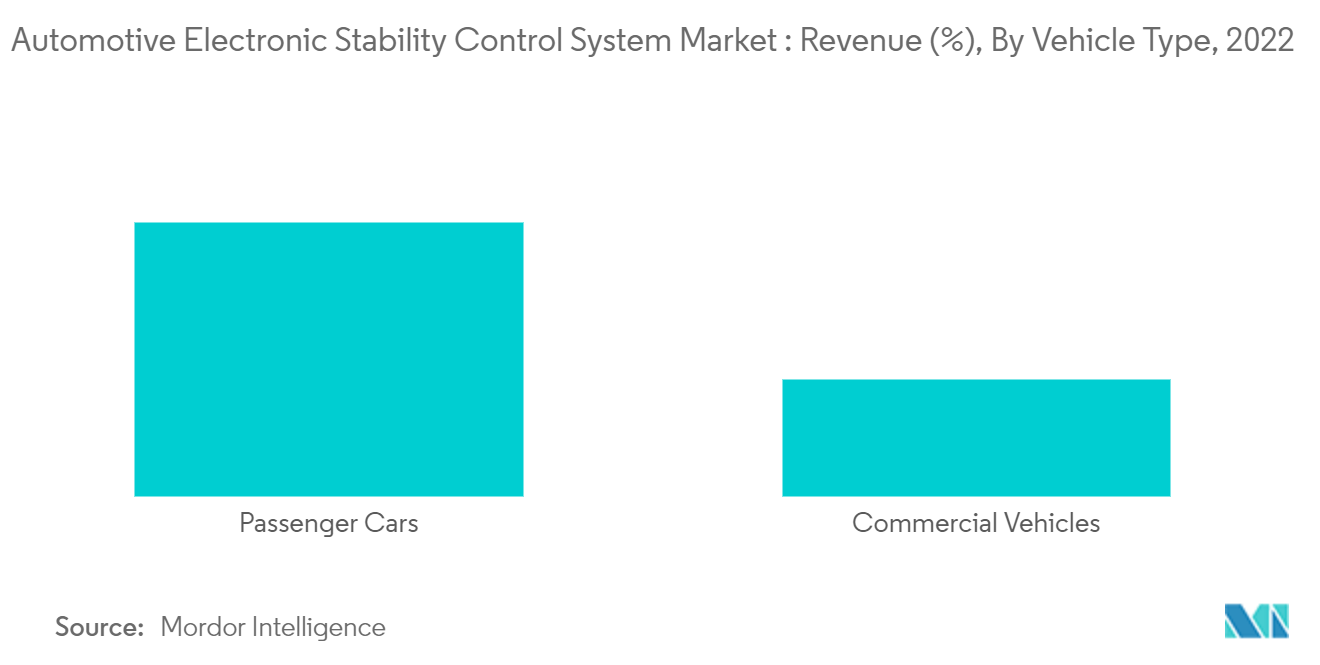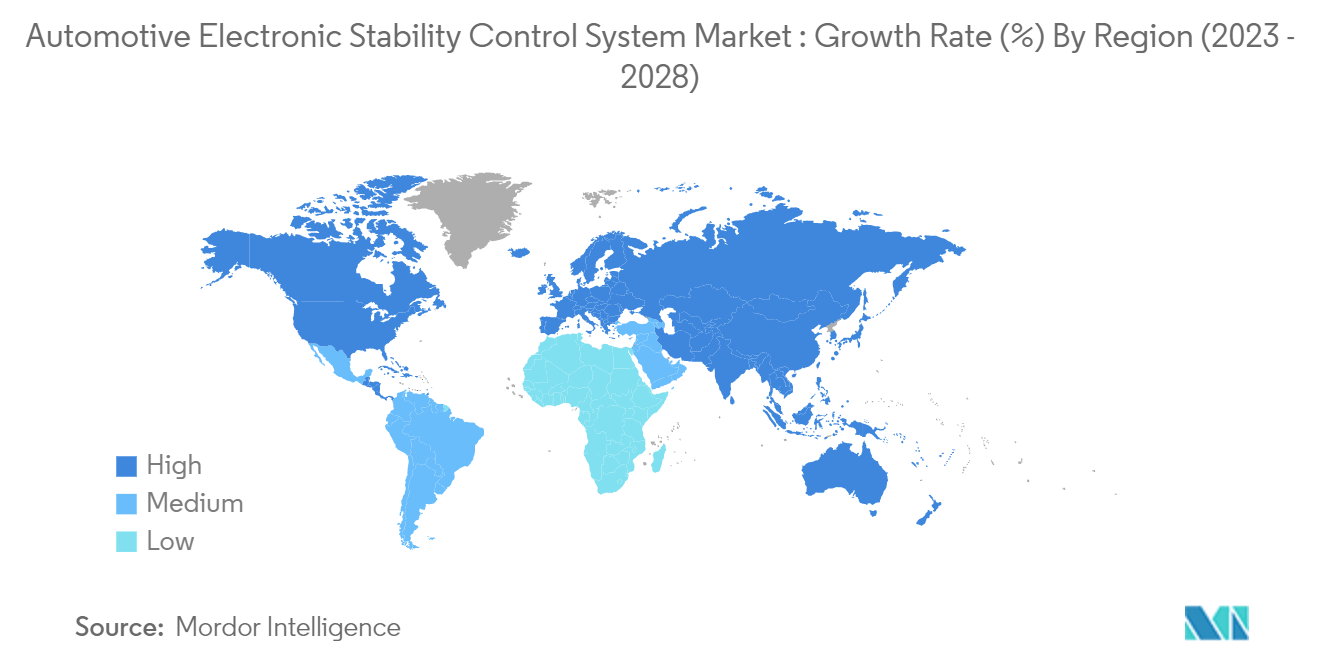Market Trends of Automotive Electronic Stability Control Systems Industry
Rising Adoption of ADAS Features in Vehicles
The growing customer awareness towards better emergency braking systems is driving the market. With the rising number of road accidents has fuelled this demand. Governments around the world are encouraging this kind of safety feature. United States, Australia, Japan, New Zealand, Russia, South Korea, Turkey, Canada, the European Union, Israel, and many other countries have made the electronic stability control system mandatory.
Increasing disposable income and changing customer preferences towards fully loaded safety features cars are driving this market growth. The passenger cars segment is expected to lead the market during the forecasted period and is expected to capture 66% of the global automotive market. Raising passenger vehicle production across the globe is also a significant factor in maintaining the dominance of passenger vehicles.
Governments across the world are focusing on designing several legislative policies and regulations to monitor users. They are proposing policies mandating and encouraging consumers to install ADAS components in vehicles to mitigate rising road accidents across several countries. For instance, the Indian government has already mandated a requirement for ABS on motorcycles with a focus on improving vehicle safety. Currently, India is working to make Electronic Stability Control (ESC) and Autonomous Emergency Braking (AEB) mandatory in cars by 2022-2023.
Autonomous vehicle technology with level 4 and level 5 autonomous cars will become a large market worldwide. By 2030, the autonomous vehicle market is expected to reach a value of 60 billion USD. North American region is expected to own up to 30% of the world's self-driving cars, with China and Western Europe holding 24%. All these factors are expected to have a positive contribution to electronic stability systems market growth.

Asia-Pacific is Expected To Lead Market
China is one of the largest automotive markets in the world, and more than 23.56 million passenger cars were sold in the country in 2022 and recorded a 9.5% yearly increase in sales compared to 2021, which in turn is likely to create a lucrative opportunity for the market during the forecast period.
Despite the pandemic, China is still one of the largest sellers of automobiles, which is a great opportunity for predictive technology to take its place in the Chinese automobile market. The Chinese government is focusing on several advanced vehicle technologies, such as Electronic stability control systems, which in turn is likely to create lucrative opportunities for the market during the forecast period.
India is an emerging economy where the implementation of advanced features in passenger cars is taking place gradually. India has potential and opportunity for the market as India is stepping gradually into the autonomous and artificial intelligence-oriented automotive industry along with many new product launches. For instance,
- In June 2023, Maruti Suzuki India Limited (MSIL) launched the off-roader Jimny at a starting price of INR 1.27 million (USD 15270). The vehicle consists of features such as a brake assist function, an electronic stability program, and other features.
- In May 2023, SAIC-GM-Wuling (SGMW) announced the official launch of the Baojun Yep, its first 3-door 4-seater battery electric SUV in China. The vehicle consists of several features such as ESC (Electronic Stability Control), Hill Hold Control, and other features.
Japan is one of the renowned names in the automobile industry, with strong automobile manufacturers serving Japanese products across the world. As Lidars and cameras are the principal components of autonomous cars, differentiating them from conventional vehicles, several companies manufacturing these components are entering into partnerships and focusing on emerging markets.
With the development mentioned above across the region, the market is witnessing major growth during the forecast period.


